
Fundamentals
The spirit of a strand, a delicate yet powerful filament, holds within its coiled embrace generations of stories, traditions, and resilience. For Roothea, the meaning of ‘Textured Hair Culture’ begins not as a mere concept, but as a living inheritance, a profound designation for the collective customs, beliefs, practices, and expressions that have historically surrounded and continue to define hair with unique curl patterns, particularly within Black and mixed-race communities. This cultural tapestry is not a recent invention; its roots stretch back to the dawn of human civilization, deeply embedded in the ancestral lands of Africa, where hair was far more than a simple adornment. It served as a visual lexicon, communicating intricate details about an individual’s life, their lineage, and their place within the communal fabric.
From ancient times, before the shadows of transatlantic crossings darkened the horizon, hair was a revered aspect of personhood across diverse African societies. It was seen as the most elevated part of the body, a conduit for spiritual connection, and a canvas for artistry. The care and styling of textured hair were communal endeavors, often stretching over hours or even days, transforming into cherished social gatherings where knowledge, wisdom, and familial bonds were reinforced. These sessions, steeped in shared laughter and gentle hands, instilled in younger generations the sacred significance of their hair.
The intricate designs created were not arbitrary; they conveyed vital information, from a person’s age, marital status, and religious affiliation to their wealth, tribal identity, and societal rank. For instance, among the Yoruba people, specific braided formations could transmit messages to the gods, underscoring hair’s spiritual power. This deep heritage, where hair acted as a potent symbol and a medium of communication, forms the foundational understanding of Textured Hair Culture.
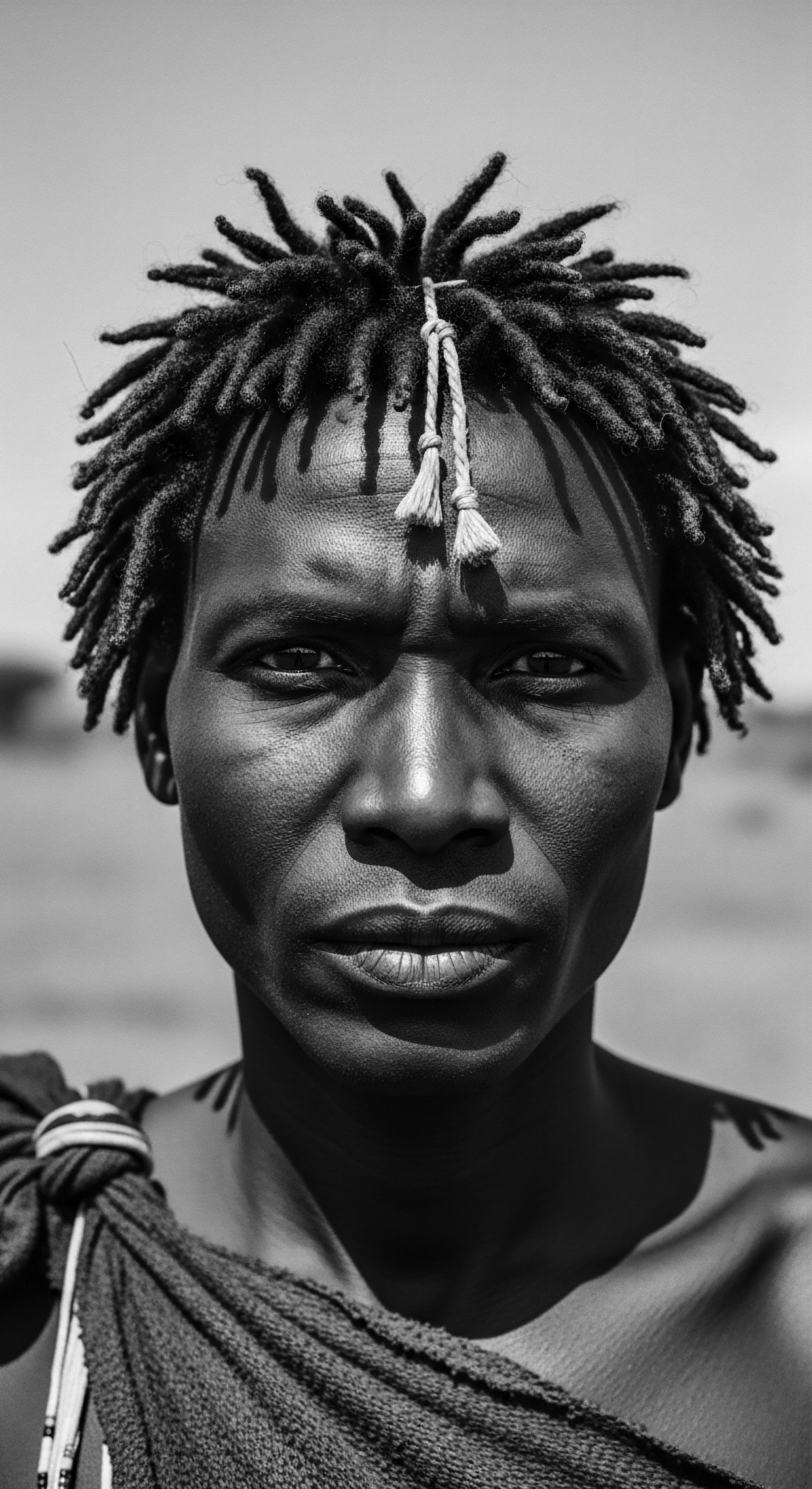
Echoes from the Source ❉ Pre-Colonial Practices
The earliest expressions of Textured Hair Culture manifest in the diverse and sophisticated practices of pre-colonial African societies. Here, the relationship with hair was one of profound respect and intimate understanding of its unique characteristics. Traditional care involved natural ingredients sourced from the earth, each selected for its specific nourishing or protective properties.
Oils extracted from local plants, rich clays, and various herbs were routinely applied to cleanse, condition, and fortify the hair. These ancestral rituals laid the groundwork for hair health, focusing on scalp vitality and strand integrity, long before modern scientific terms existed to describe such benefits.
Textured Hair Culture, in its elemental sense, is a living chronicle of ancestral wisdom, expressing identity and connection through the artistry of hair.
The artistry involved in pre-colonial African hairstyles was breathtaking in its complexity and variety. Styles ranged from elaborate braids and cornrows, often forming geometric patterns, to voluminous afros and meticulously sculpted knots. Each design held a particular meaning, a silent language spoken through coiling strands. For example, the Himba people of Namibia are renowned for their detailed, intricate braiding, with many of their styles and their meanings remaining unchanged through generations.
Such practices demonstrate a nuanced understanding of hair’s capabilities and its profound role in cultural expression. The tools used were equally ingenious, crafted from natural materials, reflecting an innate connection to the environment and a deep respect for the hair itself.
This historical period reveals a time when hair, in its natural, textured state, was universally celebrated within its own communities. The communal act of hair styling reinforced social cohesion, acting as a shared ritual that strengthened family and community bonds. It was a space for intergenerational knowledge transfer, where elders imparted techniques and the stories behind each style, ensuring the continuation of this living heritage.
The notion of ‘good’ or ‘bad’ hair, so prevalent in later eras, held no currency here; all textured hair was inherently good, inherently beautiful, and inherently significant. This intrinsic valuation of textured hair, grounded in communal reverence and historical continuity, is a vital aspect of the culture’s foundational meaning.
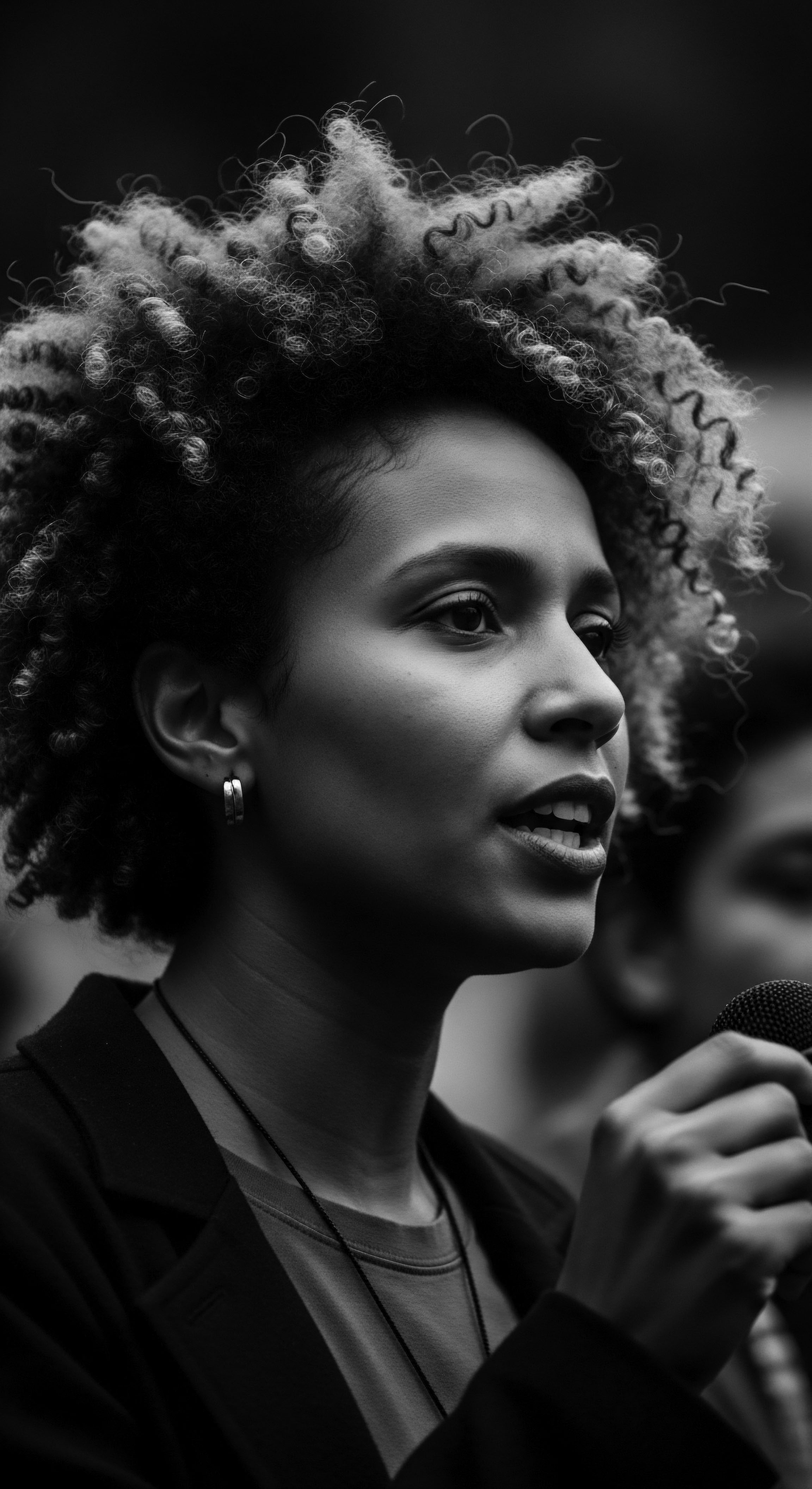
The Artistry of Ancient Adornment
The embellishment of hair in pre-colonial Africa further underscored its cultural significance. Beads, cowrie shells, feathers, and various metals were not merely decorative; they often conveyed additional layers of meaning, signifying wealth, social standing, or spiritual protection. The incorporation of these elements transformed hairstyles into wearable art, each piece a statement of identity and belonging.
The attention to detail, the time invested, and the collective participation in these practices speak to a deep cultural value placed upon hair and its presentation. This historical context illuminates the inherent dignity and reverence with which textured hair was approached, offering a powerful counter-narrative to later impositions of beauty standards.
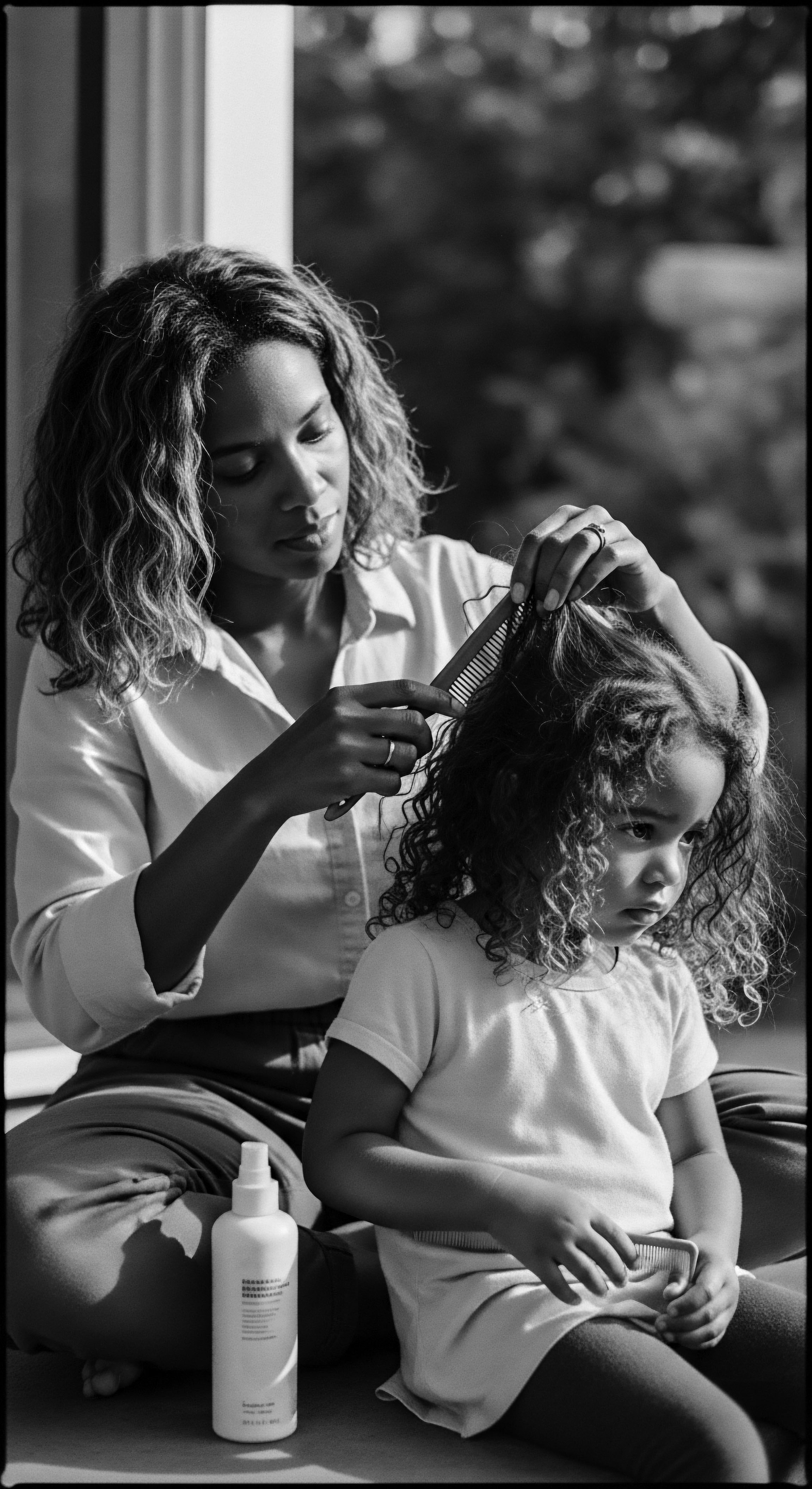
Intermediate
Moving beyond its ancient origins, the ‘Textured Hair Culture’ reveals itself as a dynamic entity, shaped by historical forces, adapting and enduring through periods of immense challenge and profound change. At this intermediate level of understanding, the focus shifts to how these heritage practices have been passed down, modified, and reclaimed, particularly within the Black and mixed-race diaspora. The meaning of Textured Hair Culture here deepens, encompassing its resilience as a symbol of identity and resistance against external pressures, while continuously evolving in its care rituals and styling expressions.
The forced migration of enslaved Africans during the transatlantic slave trade presented an unprecedented assault on their cultural practices, including hair traditions. The deliberate shaving of heads upon arrival was a dehumanizing act, intended to strip individuals of their identity and sever their connection to their ancestral lands and customs. Yet, the spirit of Textured Hair Culture, though challenged, refused to be extinguished.
Enslaved people found clandestine ways to preserve their hair traditions, often braiding seeds into their hair as a means of survival and a symbolic link to their homeland, or using cornrows to map escape routes on the Underground Railroad. These acts, born of necessity and defiance, underscore hair’s enduring significance as a repository of knowledge and a tool for liberation.
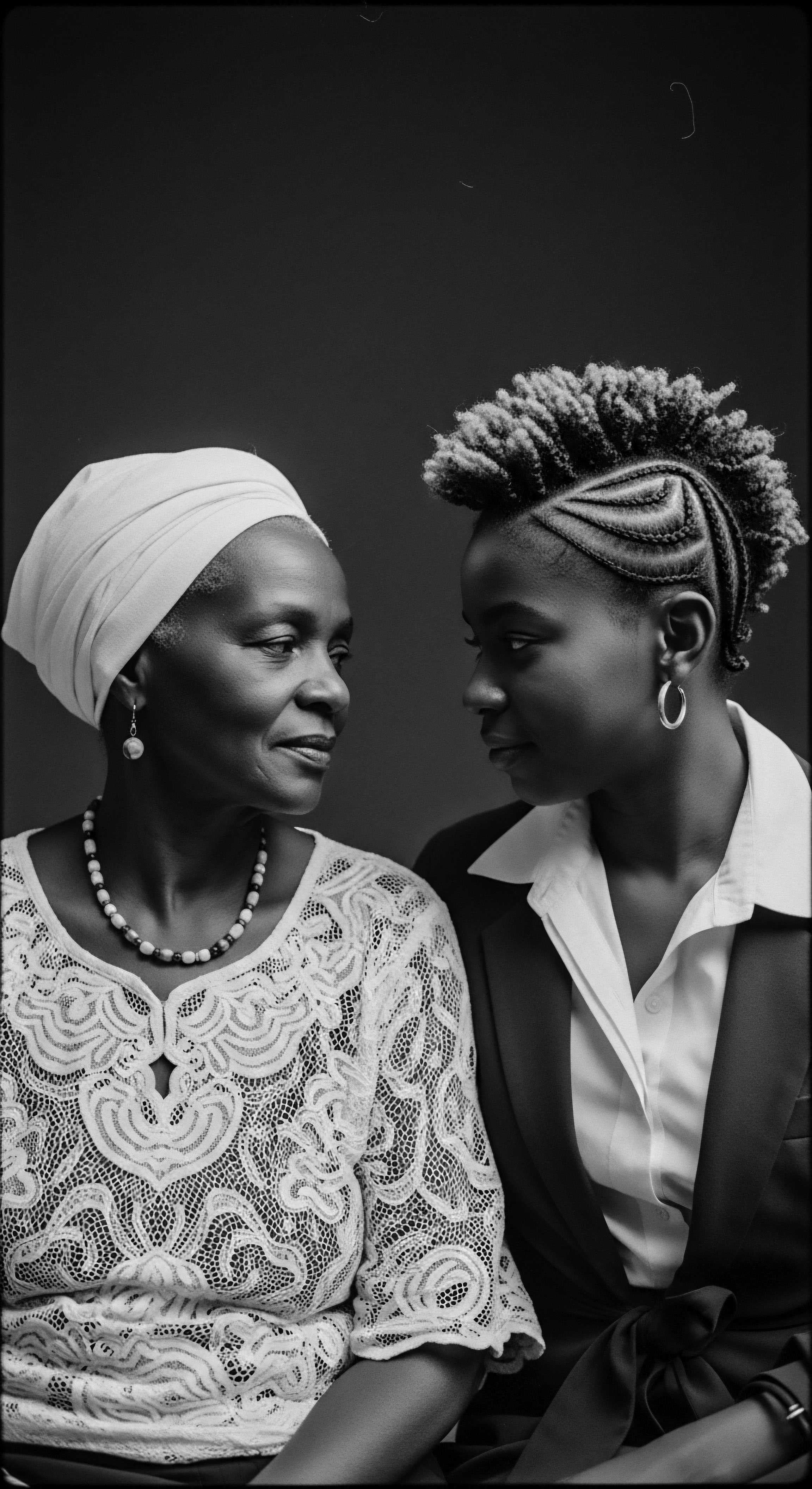
The Tender Thread ❉ Continuity Amidst Adversity
Despite the oppressive environment, the practices of caring for textured hair persisted, often in secret, passed from one generation to the next within enslaved communities. These informal lessons, conducted in hushed tones, became tender threads connecting individuals to a heritage they were forced to deny outwardly. The limited resources available meant ingenuity became a cornerstone of hair care, utilizing whatever natural ingredients could be found to maintain scalp health and hair integrity. This period highlights the deep adaptability of Textured Hair Culture, demonstrating how care rituals, though stripped of their ceremonial grandeur, retained their core intention ❉ to preserve the vitality of the hair and, by extension, the spirit of the people.
The evolution of Textured Hair Culture is a testament to unwavering spirit, transforming oppression into expressions of identity and collective memory.
Following emancipation, and throughout the 20th century, the landscape of Textured Hair Culture continued its complex journey. The prevailing Eurocentric beauty standards, which valorized straight hair, led many Black individuals to adopt chemical straighteners, such as relaxers, and hot combs to align with societal expectations for economic and social acceptance. This shift, while a pragmatic response to a discriminatory world, also contributed to an internalized perception of textured hair as “unprofessional” or “undone.” However, even within this context, the desire for hair health and the communal aspect of hair care persisted, finding new homes in Black-owned beauty salons and barbershops, which became vital social and economic hubs within urban communities. These establishments were more than just places for styling; they were spaces for conversation, community organizing, and cultural affirmation, demonstrating the adaptive nature of Textured Hair Culture.
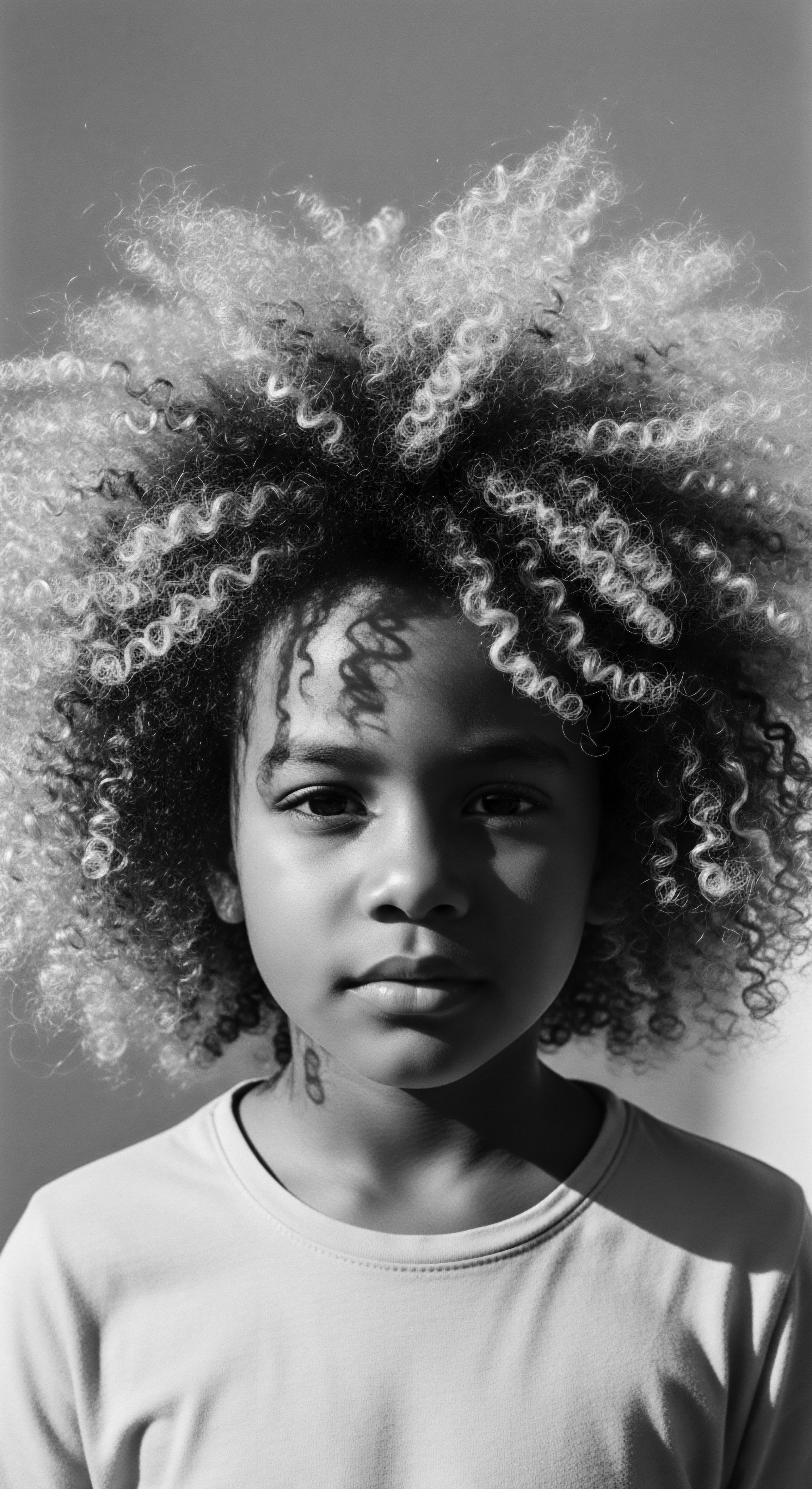
Innovators and Advocates ❉ Shaping the Modern Landscape
The resilience of Textured Hair Culture is vividly illustrated by the pioneering efforts of figures like Madam C.J. Walker and Annie Turnbo Malone. These visionary Black women recognized the unique needs of textured hair and, crucially, the economic potential within their own communities. Madam C.J.
Walker, born Sarah Breedlove, developed a line of hair care products specifically for Black women experiencing scalp conditions and hair loss, creating an empire that not only addressed a pressing need but also provided economic opportunities for thousands of Black women. Annie Turnbo Malone, a chemist and entrepreneur, established Poro College in 1918, the first Black-owned cosmetology school, training countless women in hair care, beauty, and business skills. Their contributions underscore the profound capacity of Textured Hair Culture to generate self-sufficiency and community empowerment, building on ancestral knowledge with modern entrepreneurial spirit.
The mid-20th century witnessed a significant reawakening of Textured Hair Culture with the advent of the Black Power Movement. This period saw a powerful re-affirmation of Black identity and a rejection of Eurocentric beauty ideals. The Afro hairstyle, a natural and voluminous expression of textured hair, became a potent symbol of pride, defiance, and a connection to African roots.
This shift marked a conscious return to embracing natural hair, not just as a style, but as a political statement and a celebration of inherent beauty. The natural hair movement, continuing into the 21st century, builds upon this legacy, encouraging individuals to celebrate their natural curl patterns and advocating for greater acceptance and understanding of textured hair in all spaces.
The journey of Textured Hair Culture through these periods highlights its dynamic interplay with social, political, and economic forces. It reveals a continuous process of adaptation, resistance, and re-affirmation, where hair remains a powerful marker of identity and a living connection to a rich and enduring heritage. The ongoing movement for natural hair acceptance, culminating in legislative efforts like the CROWN Act, signifies a collective endeavor to ensure that the heritage of textured hair is respected, celebrated, and protected in all aspects of life.
| Historical Period Pre-Colonial Africa (Ancient Times) |
| Historical Period Slavery & Post-Emancipation (16th – 19th Centuries) |
| Historical Period Civil Rights Era & Beyond (Mid-20th Century – Present) |
| Historical Period This table illustrates the continuous journey of Textured Hair Culture, showcasing its profound adaptability and enduring significance across historical periods. |
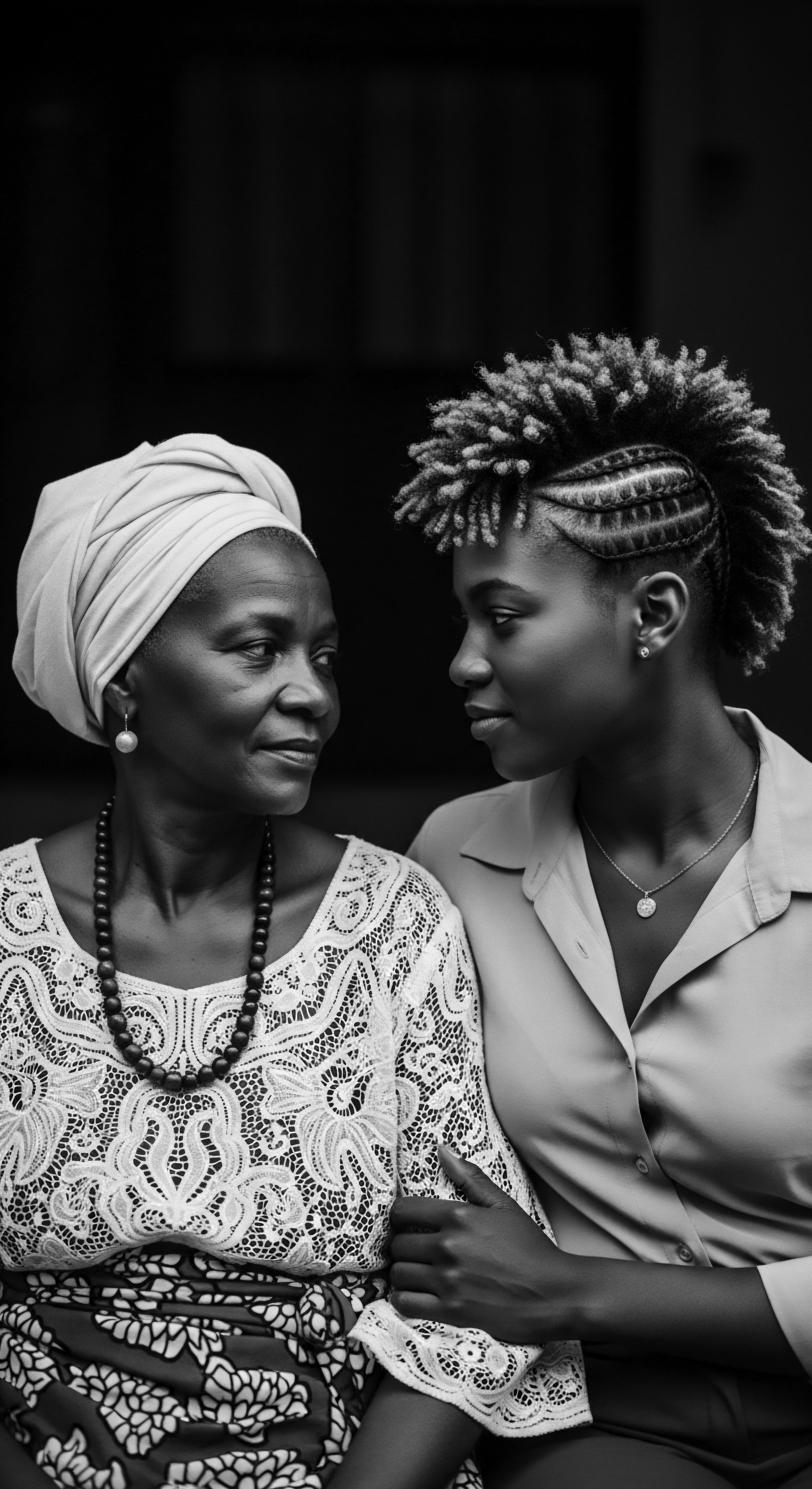
Academic
The ‘Textured Hair Culture,’ from an advanced, expert-level perspective, represents a profound and intricate socio-cultural construct, a living archive of human adaptation, resistance, and aesthetic innovation, specifically within the lineage of textured hair, Black hair, and mixed-race hair heritage. Its meaning extends beyond mere grooming practices to encompass a complex interplay of elemental biology, historical oppression, psychological identity formation, and socio-economic dynamics. This comprehensive explication positions Textured Hair Culture as a critical lens through which to examine the enduring legacy of ancestral wisdom and the ongoing pursuit of self-determination.
At its core, Textured Hair Culture delineates the comprehensive system of knowledge, rituals, and aesthetic canons that have evolved around hair with distinct helical structures, characterized by varying degrees of curl, coil, and zig-zag patterns. This system is deeply rooted in the biophysical properties of such hair, which, while sharing the same biochemical composition as straight hair, exhibits a unique elliptical cross-section and a twisted oval rod morphology, rendering it more prone to knotting and dryness. Understanding this elemental biology, often validated by contemporary trichology, allows for a deeper appreciation of the ingenious ancestral care practices that intuitively addressed these very characteristics, long before scientific instruments could quantify them. The very term ‘culture’ here signifies a collective inheritance, a repository of adaptive strategies and symbolic meanings transmitted across generations, transcending geographical boundaries and historical ruptures.
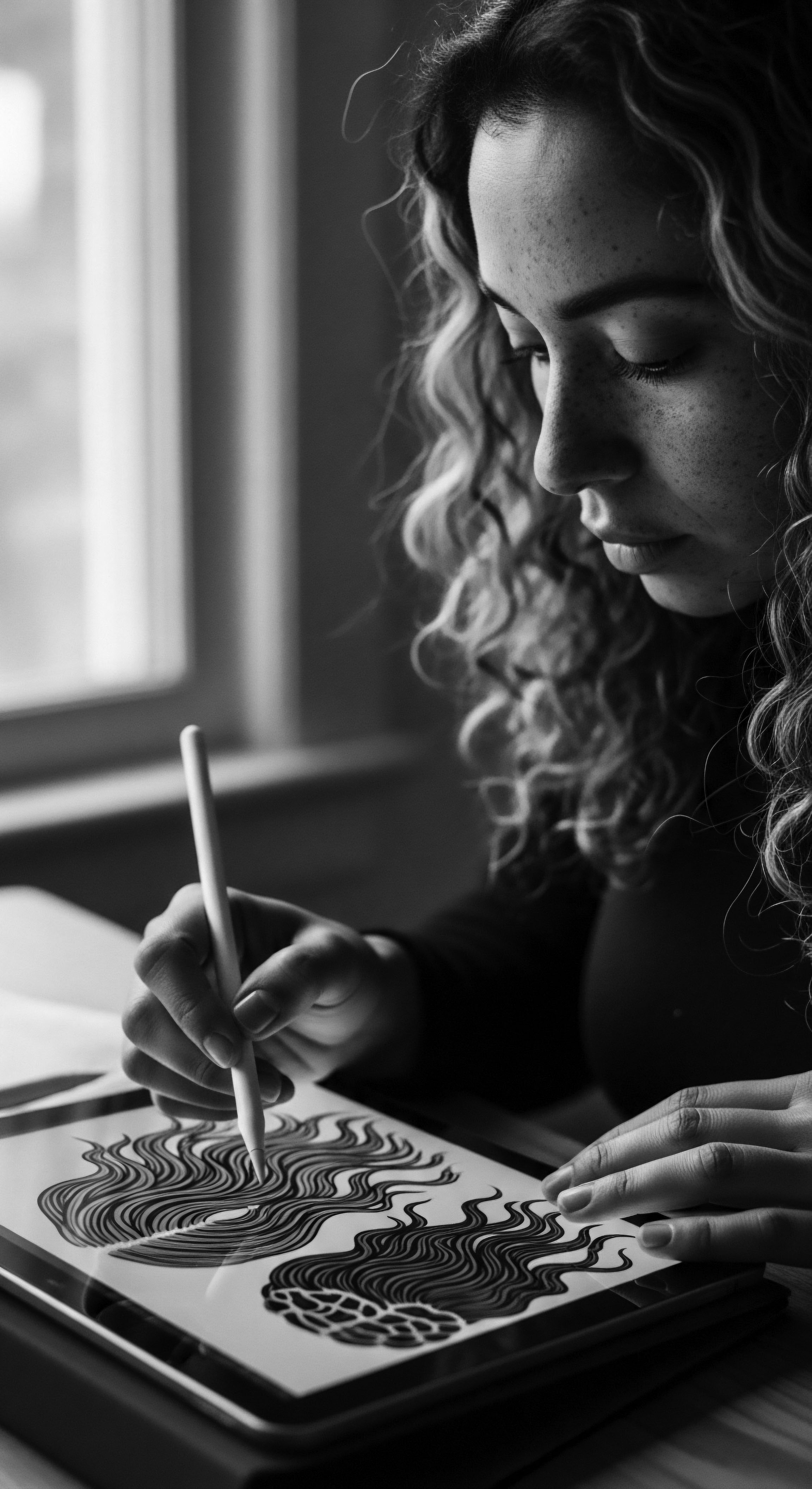
The Anthropological Dimensions of Hair as a Social Text
From an anthropological viewpoint, Textured Hair Culture functions as a potent social text, a non-verbal communication system that has historically conveyed a multitude of messages about an individual’s social status, ethnic affiliation, and personal narrative. In pre-colonial African societies, hair styling was an elaborate semiotic act, where specific patterns, adornments, and even the state of one’s hair communicated marital status, age, wealth, or readiness for ceremonial rites. This nuanced designation of hair’s communicative power was tragically disrupted by the transatlantic slave trade, where the forced shaving of heads aimed to erase these visual markers of identity and community.
Yet, even in bondage, the resilience of this culture found new expressions; cornrows, for instance, were ingeniously utilized to encode maps for escape, transforming hair into a clandestine tool of liberation. This historical continuity, where hair became a site of both imposed erasure and defiant reclamation, speaks to its profound import.
Textured Hair Culture stands as a powerful testament to collective memory, resilience, and the ongoing redefinition of beauty against historical subjugation.
The psychological implications of Textured Hair Culture are equally profound, particularly within the context of the Black diaspora. The imposition of Eurocentric beauty standards, which privileged straight hair, led to a pervasive and often internalized ‘good hair/bad hair’ dichotomy. This societal pressure, reinforced by media representations and discriminatory practices, compelled many to chemically alter their hair, resulting in potential health risks and a complex relationship with their natural texture. The 2023 survey study revealing that 61% of Black respondents used chemical straighteners because they “felt more beautiful with straight hair” underscores the deep-seated psychological impact of these external pressures.
However, the resurgence of the natural hair movement in recent decades represents a powerful counter-narrative, a collective assertion of self-acceptance and a reclamation of ancestral aesthetics. This movement is not merely about styling choices; it is a profound act of self-love and cultural affirmation, challenging centuries of imposed ideals and fostering a renewed sense of pride in one’s inherited hair.
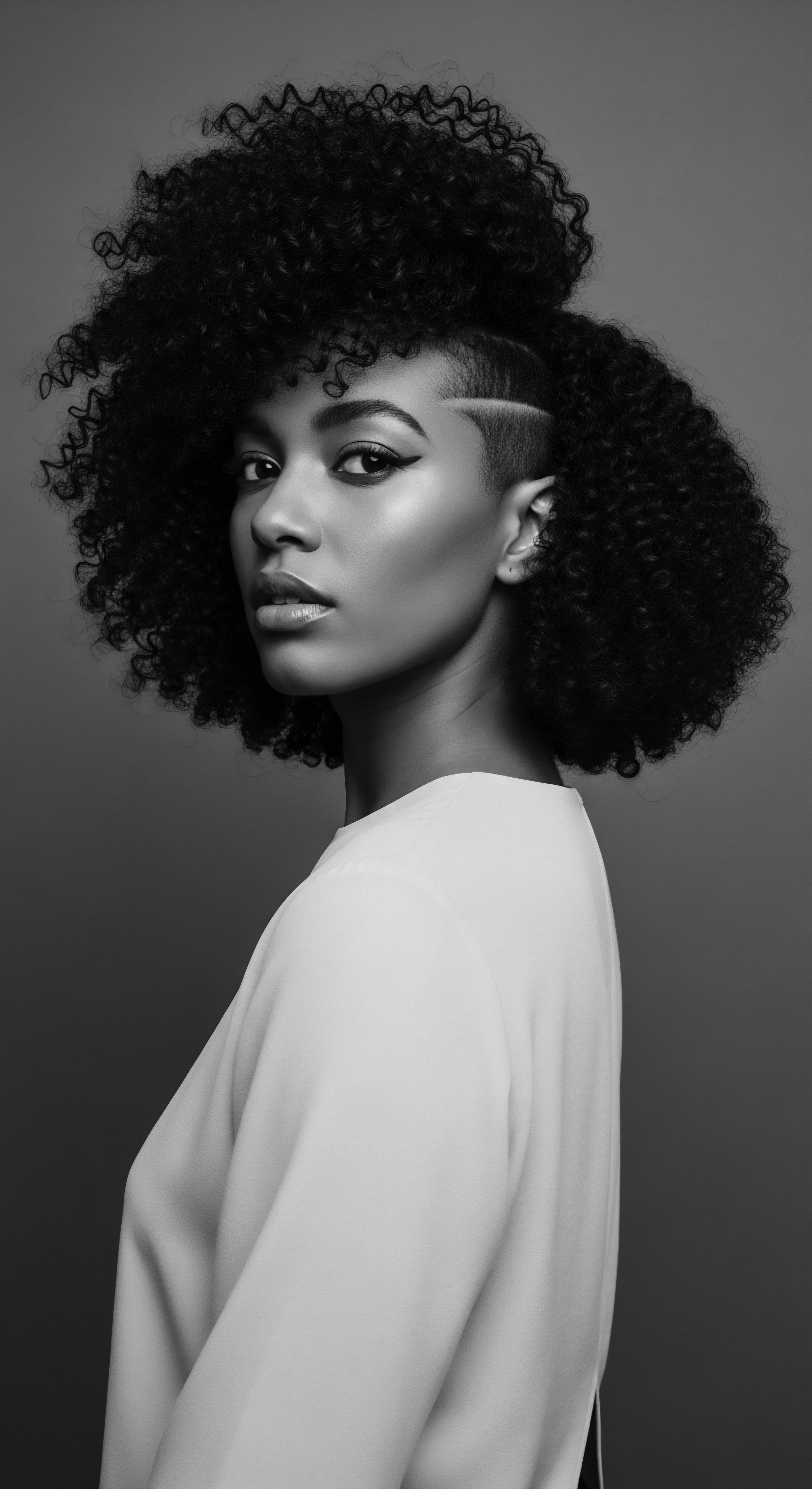
Socio-Economic Undercurrents and the Pursuit of Equity
The economic dimensions of Textured Hair Culture are substantial, representing a multi-billion dollar industry that has historically, and continues to be, disproportionately influenced by external forces. While Black women spend significantly more on hair care than their counterparts from other racial backgrounds, the ownership and control of this lucrative market have often resided outside the community. This economic reality underscores the historical struggle for self-determination within Textured Hair Culture, highlighting the need for equitable distribution of wealth and opportunities.
The success of pioneers like Madam C.J. Walker and Annie Turnbo Malone, who built significant enterprises catering to the specific needs of textured hair, provides a historical blueprint for community-led economic empowerment, demonstrating how hair care can be a vehicle for collective upliftment.
The ongoing legal and social battles surrounding hair discrimination further illuminate the complex societal implications of Textured Hair Culture. The CROWN Act (Creating a Respectful and Open Workplace for Natural Hair), first passed in California in 2019, represents a legislative effort to prohibit discrimination based on hair texture and protective styles commonly associated with race. This legislation acknowledges that hair discrimination is, in essence, a form of racial discrimination, challenging deeply ingrained biases in workplaces, schools, and other public spheres.
As of June 2023, twenty-three states had passed similar legislation, yet a federal equivalent remains pending, revealing the persistent systemic barriers faced by individuals with textured hair. This case study powerfully illustrates how the cultural meaning of textured hair is not merely aesthetic but deeply intertwined with civil rights and the broader struggle for racial equity.
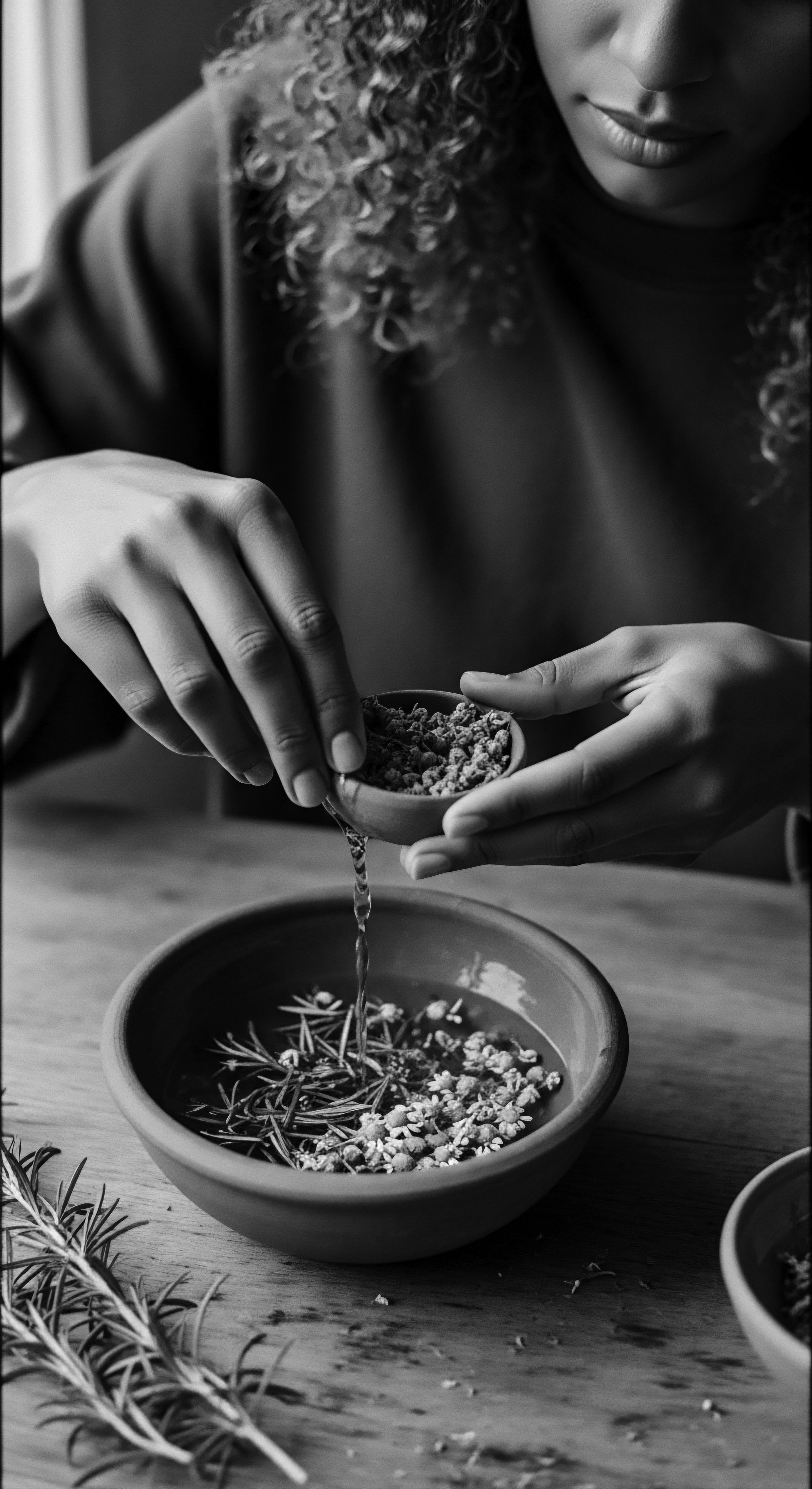
Ethnobotanical Wisdom and Scientific Validation
The academic examination of Textured Hair Culture also bridges the historical and the scientific, particularly through the lens of ethnobotany. Traditional African hair care practices often relied on indigenous plants, whose properties are now being increasingly validated by modern scientific research. For instance, studies in cosmetic ethnobotany are exploring the efficacy of plants like Lawsonia Inermis (Henna) for strengthening and revitalizing hair, or Origanum Compactum (Zatar) for anti-hair loss properties, echoing centuries of traditional use.
This convergence of ancestral wisdom and contemporary scientific inquiry not only legitimizes long-standing practices but also opens new avenues for developing effective and culturally attuned hair care solutions. It underscores the profound ecological knowledge held by ancestral communities, who intuitively understood the symbiotic relationship between nature and human wellbeing.
- Hair Morphology ❉ The unique elliptical cross-section and twisted oval rod shape of textured hair strands contribute to its inherent dryness and propensity for tangling. This structural characteristic necessitates specific care regimens that prioritize moisture retention and gentle detangling, a wisdom intuitively understood by ancestral communities.
- Cuticle Integrity ❉ Textured hair often possesses a sparse outer cuticle, rendering it naturally higher in porosity compared to other hair types. This means it can absorb moisture quickly but also lose it just as rapidly, a factor that informed traditional practices of sealing moisture with oils and butters.
- Sebum Distribution ❉ Despite having comparable sebum production to other hair types, the coiling nature of textured hair impedes the natural distribution of sebum down the hair shaft, leading to perceived dryness. This biological reality explains the historical reliance on external oils and emollients in textured hair care to provide lubrication and protection.
- Mechanical Fragility ❉ The inherent twists and turns of textured hair make it more susceptible to mechanical damage from combing and braiding, especially when dry. This scientific understanding validates the traditional emphasis on protective styling and detangling hair when wet or well-conditioned.
The advanced comprehension of Textured Hair Culture thus necessitates a multidisciplinary approach, drawing from anthropology, sociology, psychology, and hair science. It is a testament to the enduring power of cultural heritage, demonstrating how a seemingly personal aspect like hair can become a powerful site of historical struggle, cultural expression, and ongoing liberation. The future of Textured Hair Culture lies in its continued recognition as a legitimate and valued form of human expression, grounded in a profound past and poised for an unbound future.
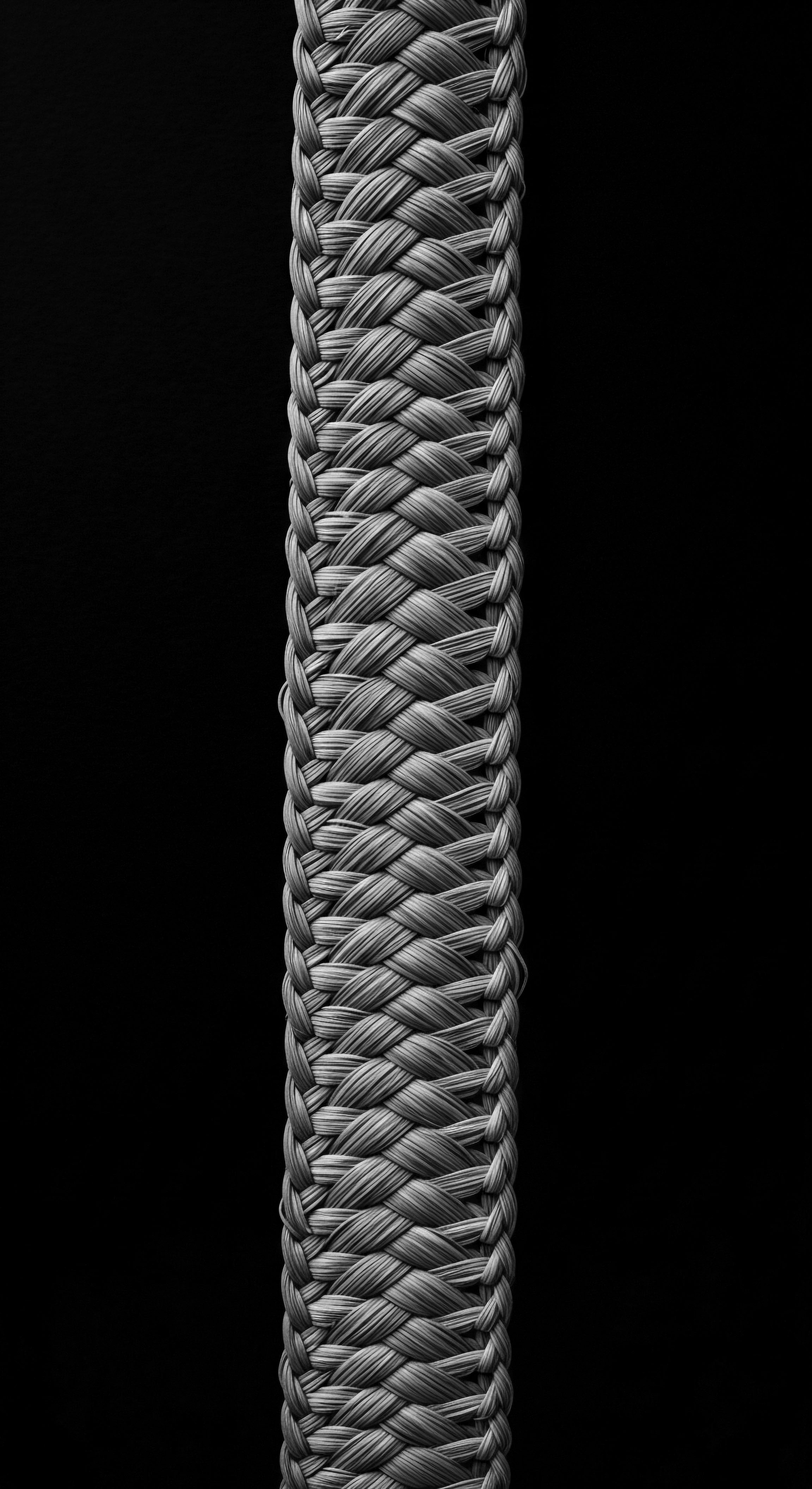
Reflection on the Heritage of Textured Hair Culture
The journey through the nuanced landscapes of Textured Hair Culture is, at its very core, a profound meditation on the enduring spirit of a strand. It is a story not merely of aesthetics, but of an unbroken lineage of identity, resilience, and boundless creativity, passed down through the gentle touch of generations. From the communal hearths of ancient Africa, where hair was a sacred language speaking volumes of one’s place in the world, to the clandestine acts of resistance during enslavement, and the powerful affirmations of selfhood in contemporary movements, Textured Hair Culture remains a living, breathing testament to the human spirit’s capacity to thrive against all odds.
Each coil, every wave, and each intricate braid holds the whispers of ancestors, echoing their wisdom, their struggles, and their triumphs. It is a reminder that hair, for Black and mixed-race communities, is never just hair; it is a repository of collective memory, a symbol of heritage, and a canvas for expressing the profound beauty of diverse experiences. As we continue to understand and celebrate the biological uniqueness and cultural richness of textured hair, we do more than simply care for strands; we honor a legacy, we affirm identities, and we pave the way for future generations to wear their heritage with unbridled pride. This enduring connection, this ‘Soul of a Strand,’ ensures that the narrative of Textured Hair Culture will forever be one of strength, beauty, and liberation.
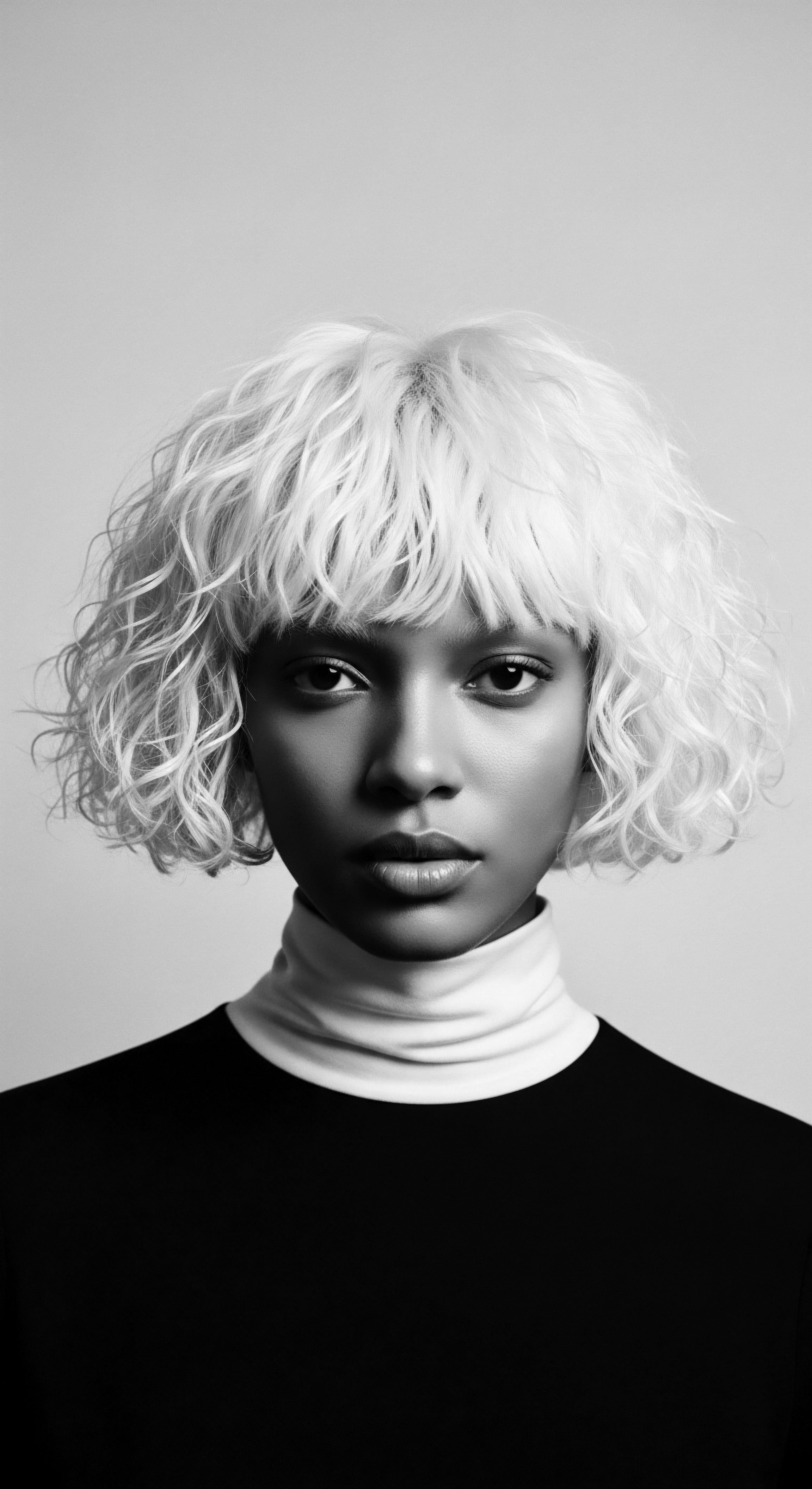
References
- Byrd, A. D. & Tharps, L. L. (2014). Hair Story ❉ Untangling the Roots of Black Hair in America (Revised ed.). St. Martin’s Press.
- Cobb, J. N. (2023). New Growth ❉ The Art and Texture of Black Hair. Duke University Press.
- Dabiri, E. (2020). Twisted ❉ The Tangled History of Black Hair Culture. Harper Perennial.
- Oforiwa, A. (2023, December 7). The History and Culture of African Natural Hair ❉ From Ancient Times to Modern Trends. AMAKA Studio.
- Oyelowo, T. (2023, November 30). What Every Dermatologist Must Know About the History of Black Hair. The Journal of Clinical and Aesthetic Dermatology.
- Rooks, N. M. (1996). Hair Raising ❉ Beauty, Culture, and African American Women. Rutgers University Press.
- Rosado, S. D. (2006). No Nubian Knots or Nappy Locks ❉ Discussing the Politics of Hair Among Women of African Decent in the Diaspora. A Report on Research. Association of Black Anthropologists.
- Singh, P. K. et al. (2024). Cosmetopoeia of African Plants in Hair Treatment and Care ❉ Topical Nutrition and the Antidiabetic Connection? Diversity, 16(2), 96.
- Tshiki, N. A. (2025, February 27). African Hairstyles – The “Dreaded” Colonial Legacy. Gale Ambassador at the University of Johannesburg, South Africa.
- USC Dornsife. (2016, October 18). Kinky, curly hair ❉ a tool of resistance across the African diaspora. USC Dornsife.
